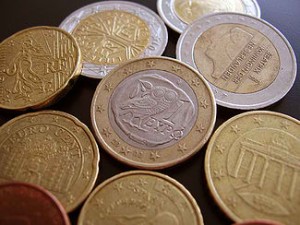Four Types of Financial Risk Explained
By Colin Frey
When you have a little money to spare, you may just decide to save it, or you may want to use it to invest in an asset which has the potential to provide a greater return. Investing can be a very good idea as it is a very easy way of gaining more money. However, whatever type of investment you choose will have potential risks attached, which could mean you stand to lose some or all of the initial cash you put in.
There are many different types of financial risks, which vary in severity, and are usually dependent upon the amount of money invested and the potential return. Below is explained the four of the most common types of financial risk.
Liquidity Risk
Liquidity is the risk that a given asset, or business, may not be able to be traded quickly enough to prevent financial loss. There are two main types of liquidity risk; asset liquidity and funding liquidity.
Asset liquidity risk arises due to a lack of liquidity in the market resulting in an asset not being able to be sold. Funding liquidity is the risk that liabilities are not met when they’re due or are only met by an unreasonable and uneconomic price.
This type of risk arises when the demand on the market changes, which is why holding on to an invested asset for too long can raise the chances of a liquidity issue.
Foreign Risk
 One of the most common types of financial investment is in foreign exchange, whether that is simply in currency or importing goods and services from abroad. The biggest risk for this type of investment is that there will be an unexpected change in the exchange rate between two currencies.
One of the most common types of financial investment is in foreign exchange, whether that is simply in currency or importing goods and services from abroad. The biggest risk for this type of investment is that there will be an unexpected change in the exchange rate between two currencies.
The currency market is renowned for being particularly volatile and can swing rapidly and heavily without much warning. Therefore, if you have money which could be impacted by this, as soon as a currency appears to be becoming unstable it is essential to change your investments in order to protect yourself. The consequences of failing to act can be very severe and result in hefty monetary loss.
The foreign exchange rate can vary dramatically, which can be quite a big risk
Shares Risk
Investing in shares is the most common type of long-term investment as it usually offers a greater stability than other types of investment and hopefully gives you a better return than simply leaving your money in the bank.
It is very important to do proper research into the company or business in which you wish to invest, because although this type of investment can be very rewarding, there are also risks attached. If the business went into liquidation, for example, you would immediately lose all your money.
Share prices often fluctuate and the finances of a company can change suddenly. That is why investing in shares is a good idea if you can afford a long-term investment as you will be better placed to ride out any negative fluctuation.
Commodity Risk
Commodity risks occur as a result of the ebb and flow in the price of commodities. The most common commodities are usually metals, gas, electricity and grain, the price of which can all be affected by a number of different factors.
Dealing with commodity investments can be difficult because you cannot predict where the prices will end up. Lots of things can affect the risk in commodity trading, including geographical issues. For example, oil prices may go sky-high as a result of political instability in Asia. This is a market best left to those who are more experienced in placing investments.
 It’s important that you decide where to invest your money carefully
It’s important that you decide where to invest your money carefully
Conclusion
Above is a short guide to four of the most common types of risk associated with the financial world. To ensure the least amount of risk you need to do detailed research before investing any money, and, if you can, plan to leave your investment untouched for as long as possible.
Image credits: Wikipedia and epSos.de Related Article: Investing Tips on Home 4 Wise Steps to Consider in Handling your Finances 10 Essential Reasons To Invest In Colored Diamonds _______________________________________________________________________________________________________ Author: This article was written by Colin Frey with the help of Currency Index – the experts in foreign currency transfers. _______________________________________________________________________________________________________












